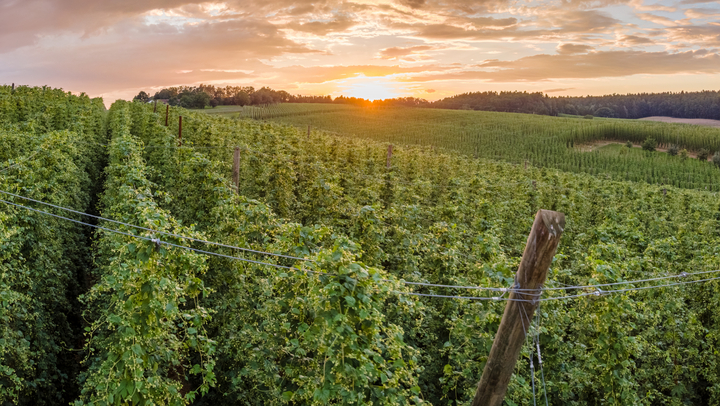Despite the global decline, Germany reclaimed its position as the top hop-producing country in 2024. Due to long-term contracts, the reduction in acreage was relatively moderate at just 1.6 percent. For 2025, however, a drop to 18,962 hectares is expected, representing a 7 percent decrease.
The most significant contraction occurred in the United States, where hop acreage fell by nearly 18 percent to 18,513 hectares. The Czech Republic remains in third place, with 4,845 hectares under cultivation.
Global hop production also decreased in 2024, falling by 3.9 percent to 113,528 metric tons. At the same time, the alpha acid yield – the key component in hops responsible for beer’s bitterness – increased slightly by 1 percent to 11,912 metric tons. The average alpha acid content reached 10.5 percent, up from 10.0 percent in the previous year.
As in 2023, the balance of hop varieties shifted further in favor of bittering hops, while aroma hop varieties continued to decline in proportion.
The consolidation trend in the hop-growing sector also continued in 2024. In Germany, 31 hop farms ceased operations. The remaining 1,009 farms cultivated an average of 20.1 hectares, up slightly from the previous year.
“The market remains structurally oversupplied, with volumes largely sold under forward contracts but not fully consumed,” said Heinrich Meier, author of the BarthHaas Report. “Further reductions in acreage are therefore necessary to rebalance the market.”
The decrease in hop demand is largely driven by shifts in global beer consumption. “The trend toward mainstream beers and low- or no-alcohol variants continued in 2024 and even gained momentum,” explained Thomas Raiser, Managing Director of BarthHaas. These beer styles typically require less hop content.
Even in the craft beer segment, lower hop usage is being observed, due to both the increasing use of high-efficiency hop products and a return to traditional, bottom-fermented beer styles with more moderate hopping rates.
In addition to these trend shifts, other factors are also contributing to lower demand in traditional beer markets, such as an aging population, increased competition from a wider range of beverages, and reduced consumer purchasing power amid economic uncertainty.
The market environment remains tough: a cautious, price-sensitive brewing industry meets rising production costs driven by inflation in energy, materials, and labor.
In this context, BarthHaas positions itself as a knowledgeable and reliable partner. “We support breweries and beverage producers in understanding and leveraging current trends,” said Raiser. “Hops are a unique ingredient – they can be key to product diversity, clean-label formulations, and flavor in high-growth categories like no- and low-alcohol beers.”




